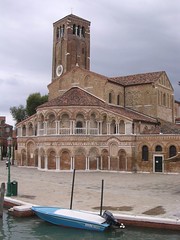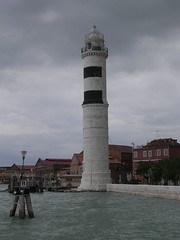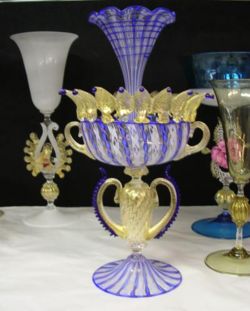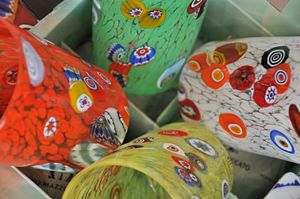Murano island
Da Venicewiki, il wiki di Venezia
Description
To the north-east of Venice, visible from the Fondamenta Nuove, lies the island of glass, Murano.
Probably inhabited since Roman times, Murano owes its name to the refugees from Altino, a Roman city inland a few miles north of Torcello.
Numerous Highborne, in fact, between the end of the sixth century AD. C. and the first half of the seventh, took refuge here to escape the invading Lombards, calling their new land Amurianum, in memory of one of the gates of their city.
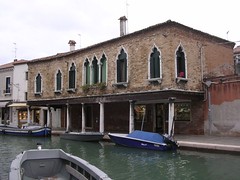
Known throughout the world for the manufacture of glass, not everyone knows that it was an edict of the Grand Council in 1292, to move the production of glass in the island. The official reason was to avoid the centralization of dangerous furnaces in Venice so that you could avert the danger of Fires in Venice, often disastrous for the city.
Some legends, and you know that behind all the legends there is some truth, some legends say that the assassins were sent to "urge" the return of some fugitives with the imperative order to kill them if they were not able to convince them to return to live in their homeland.
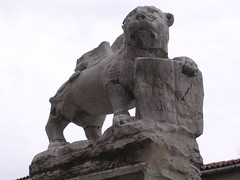
Murano is formed by five islands connected by bridges. Also has its Grand Canal and numerous palaces which are reflected on it. The most ancient remains is certainly the Palazzo Da Mula, of the thirteenth century, shows its facade with Gothic rose windows and the balcony overhanging the shore.
On this island the Venetian nobles spent their holiday periods. Many were the homes of various patrician families, including Corner, Querini, Morosini and others.
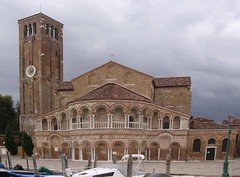
The construction of this beautiful church dates back to the seventh century, but its present form it acquired in the eleventh century. The shape of the Romanesque apse external hexagonal your order of niches adorned with pairs of columns and Romanesque capitals, as well as its splendid mosaics dating back to the ninth century, put it as a must for those who want to have a complete vision of the Venetian art.
The viability of Murano looks around to that of Venice, only the numbering of buildings differs from the city. The Toponymy antique door nomenclatures, Bressagio (deriving from the place intended target for the first Alabastre and then for muskets), Rio of Glaziers, Fondamenta Navagero, but also new names because many roads are opened only in very recent times, calle Antonio and Bartolomeo Vivarini, calle Volpi, etc ...
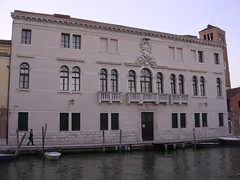
Going to any of the seven vaporetto stops Murano (Murano: how to arrive), Column, Faro, Navagero, Museum, Da Mula, Venier, Serenella, you will find countless shops that offer passersby the best items that can be produced on the island today. Glasses, vases, bowls, lamps and chandeliers and objects of any kind all performed with great skill by the centuries-old Murano glass masters. (Glass glossary)
Some factories of Murano have time specialized in the production of mosaic tiles to meet the demand of the St. Mark's Basilica which in its interior has an area of 8000 square meters of mosaics, mostly covered with precious 24-carat gold leaf, to bring out the most light that enters through the large glass facade. The constant attention and constant monitoring of vitreous tiles attached to the main structure of the Church of Venice, could allow the mosaics could successfully overcome the centuries perfectly kept in their original splendor.
Murano is within easy reach Venice by vaporetto line 41 from Piazzale Roma, lina 42 from Lido, line 5 from St. Mark's Square ACTV, from Treporti with the boat that stops well to Burano, or to Marco Polo Airport with the direct line of Alilaguna.
- How to get to Murano
- Book a visit to a Murano Glass Factory
- Brand Artistic Murano Glass
- Glass Factorys
- Glass glossary
- E-Commerce Murano's Glasses
- St. Nicholas patron of Murano glass-makers
Foto





